Even though Giudecca lies directly in front of Venice and the vaporetto ride takes only 3 minutes, it is often ignored by visitors. The small island is however perfect to escape the crowds in Venice. It has a lot to offer, so it’s worth spending half a day or even a full day on the island.
Giudecca was originally an area characterized by large palazzos with gardens. In the early 20th century, it evolved to an industrial zone with shipyards, factories and even a film studio. Since the decline of the industry after World War II, it is now a quiet residential neighborhood. This evolution resulted in a wide variety of interesting buildings, ranging from churches to warehouses and from palazzos to refugee houses.
In this post, I will describe 10 totally different sites which you can admire on the island. Depending on what you like, you can visit a church, have a drink or a meal at a fancy hotel, attend an event, buy vegetables from the female prisoners, learn more about the history of Venice or meet local artisans. It’s totally up to you.
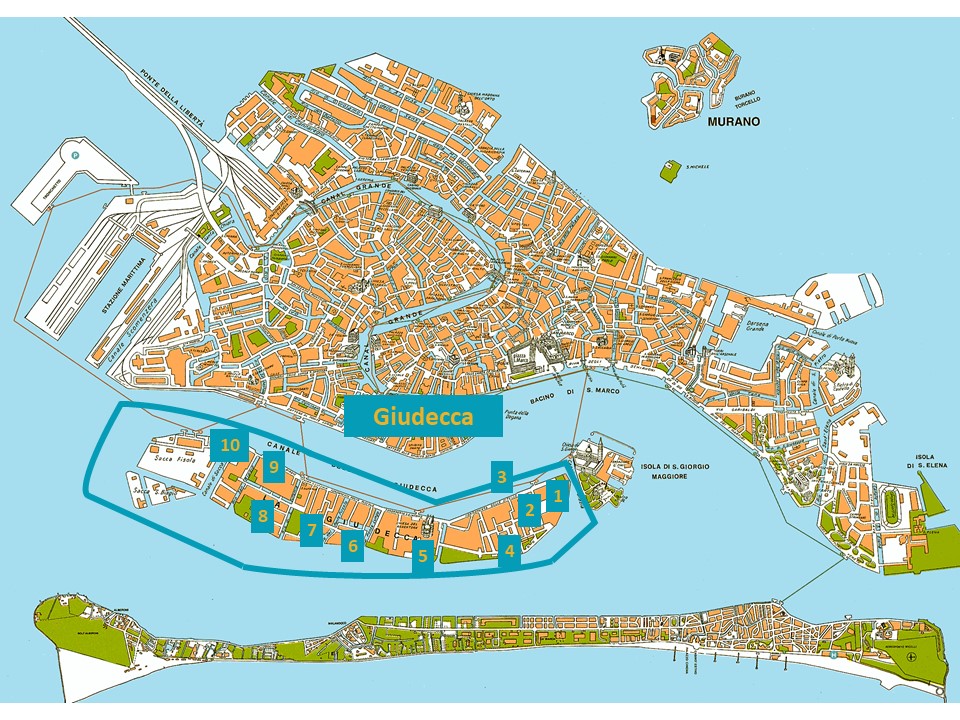
1. Antichi Granai della Repubblica
(Giudecca 10)
With the expansion of Venice in the 19th century, the port activities moved to Giudecca. In the meantime, these are relocated to Marghera. A reminder of this period is the site with old granaries at the east side of the island. These warehouses were built on the ruins of Palazzo Dandolo. The old granaries with the heigh ceilings have now been restored as an event location of the Belmond Hotel Cipriani. If you’re lucky to be able to attend an event, you will have plenty of opportunity to admire the warehouses.
2. Le Zittele
(Fondamenta Zitelle, Giudecca 33)
The façade of Le Zittele, with the Santa Maria della Presentazione church in the middle flanked by the wings of the convent, is an eye-catching part of the Giudecca skyline. The church is said to be designed by Andrea Palladio around 1576, but there is some doubt about it. It was built by Jacopo Bozzetto from 1581. The Istituto delle Zitelle (Home for Unmarried Women) was a hospice for beautiful girls from poor families, whose beauty was thought to put them in danger of falling into prostitution. This was a preventive measure, as opposed to the nearby Convertite’s goal of helping already-fallen women. The young virgins already joined from the age of 12 and stayed in the hospice until they were 18. At that moment, they could choose between marriage or the nunnery. In 1583, there were approximately 200 unmarried women living in Le Zittele. The women’s institutions and the orphanage were moved to the mainland during the 1970s.
The convent with its beautiful garden is now a Bauer hotel, the Palladio Hotel & Spa.
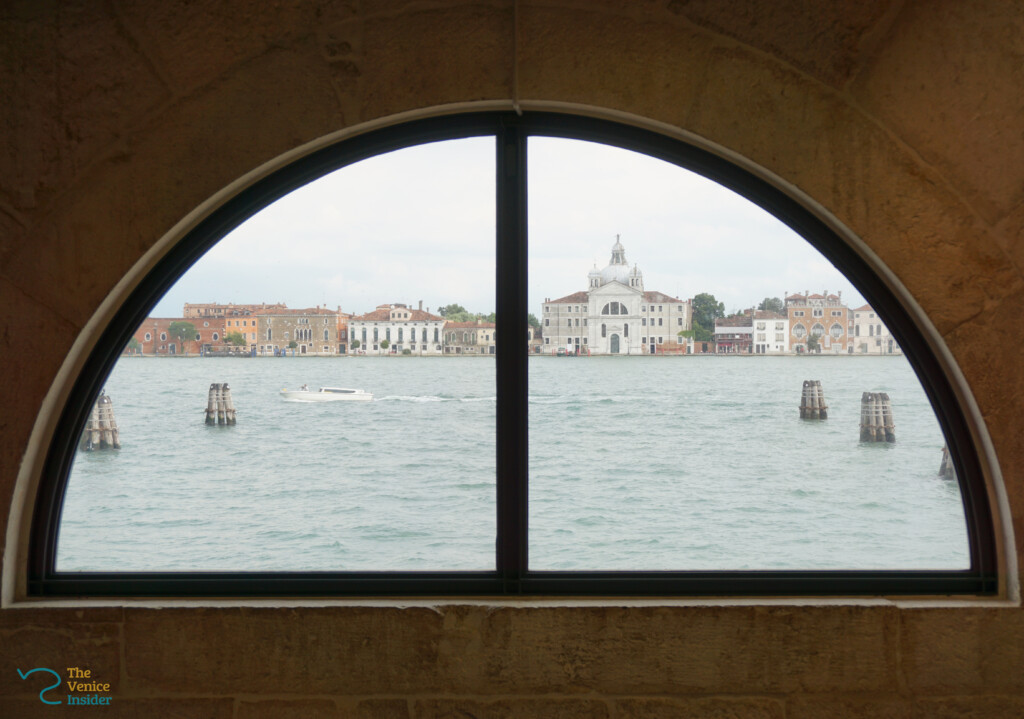
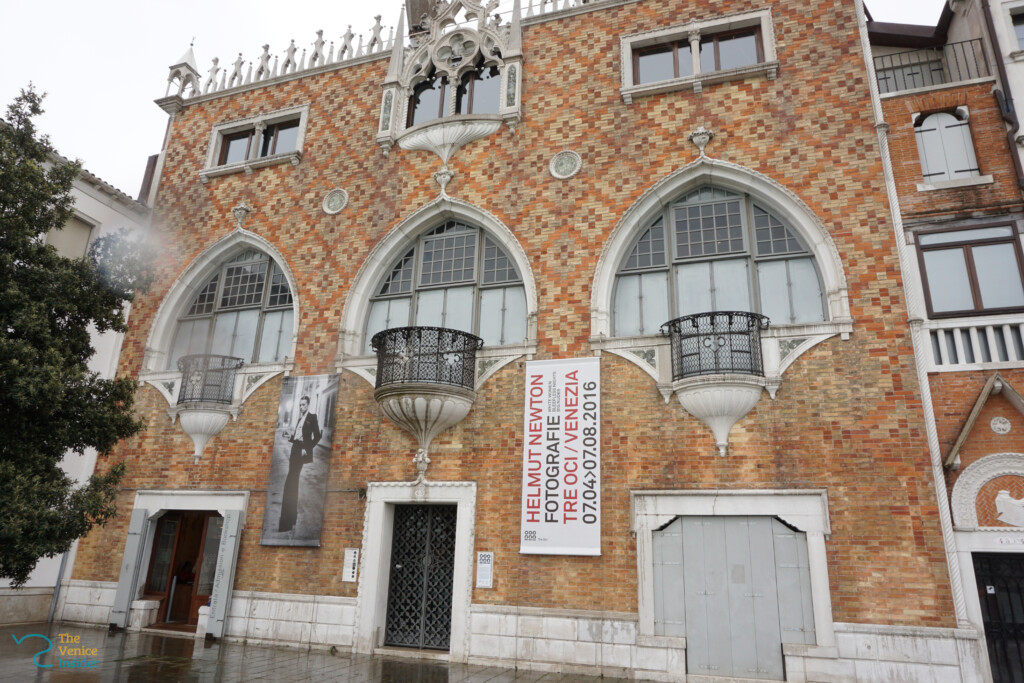
3. Casa dei Tre Oci
(Giudecca 43)
The Casa dei Tre Oci is one of the iconic buildings on Giudecca. The 3 large ogival windows were inspired by Palazzo Ducale, which can be seen from this location. The building is one of the main examples of neo-Gothic architecture in Venice. It was designed by the artist Mario De Maria (Marius Pictor) and built in 1913. Even though he conceived it as a studio-home for himself, it was his son Astolfo, who was also a painter, who lived in it with his wife Adele. The house was always a place of artistic and cultural production, a centre for meetings and debates, a studio for artists taking part in the Biennale and a welcoming space for intellectuals visiting Venice. It remained vibrant and active until the end of the 1980s.
After careful restoration, the Casa dei Tre Oci became a public exhibition venue in 2012. It used to be a photography museum until 2021, when it was acquired by the Bergruen Institute, a global think tank. The historic function will be preserved as it will serve as a house of ideas and a gathering place for global dialogue housing an international program of summits, workshops, symposia, and exhibitions.
4. Villa Hériot
(Calle Michelangelo 54/P)
During the French occupation at the beginning of the 19th century, part of Giudecca had been destroyed and used as military training ground. In 1926, this abandoned site was bought by the Hériot family, who owned the Grands Magasins du Louvre in Paris. Raffaele Mainella designed their residence, inspired by the Veneto-Byzantine style and his travels. From its inauguration in 1929, the Villa was a place of sumptuous parties. When the Hériots returned to France at the outbreak of World War II, the buildings were requisitioned by the Germans and later by the Allies. In 1947, Auguste Hériot, the last heir of the family, sold the Villa Hériot to the city of Venice. It was converted into a primary school and an open-air school for impoverished children prone to TB.
DID YOU KNOW? The Villa was originally named ‘Villa Michelangelo’, to commemorate the famous Renaissance artist, who found shelter in Giudecca four centuries before.
Since 2000, the Casa della Memoria e della Storia and Iveser, the Venice Institute for the Study of the History of the Resistance and Contemporary Society, are based in the Villa Hériot. You can visit the house, the garden and the large archive and library with one of their guided tours (upon request).
5. Il Redentore
(Fondamenta San Giacomo)
The Chiesa del Santissimo Redentore is the most important touristic landmark on Giudecca. It was built as a plea to God to end the plague which hit Venice hard between 1575 and 1577. The bacteria killed 50,000 people, almost one third of the total population. Andrea Palladio designed the church and laid the first stone in May 1577. After Palladio’s death in 1580, the works continued under the supervision of Antonio da Ponte, the architect of the Rialto bridge. In 1592, the church was completed and consecrated by Lorenzo Priuli, Patriarch of Venice, under Doge Pasquale Cicogna. The Redentore church is one of Palladio’s finest churches. Its wide staircase and huge doorway are especially designed for processions, such as the one of the Festa del Redentore. The interior is very sober, in line with the vows of poverty of the Capuchin monks.
DID YOU KNOW? Once a year, during the Festa del Redentore, Giudecca is connected to the city of Venice via a pontoon bridge. This is without doubt the most busy weekend on the island.
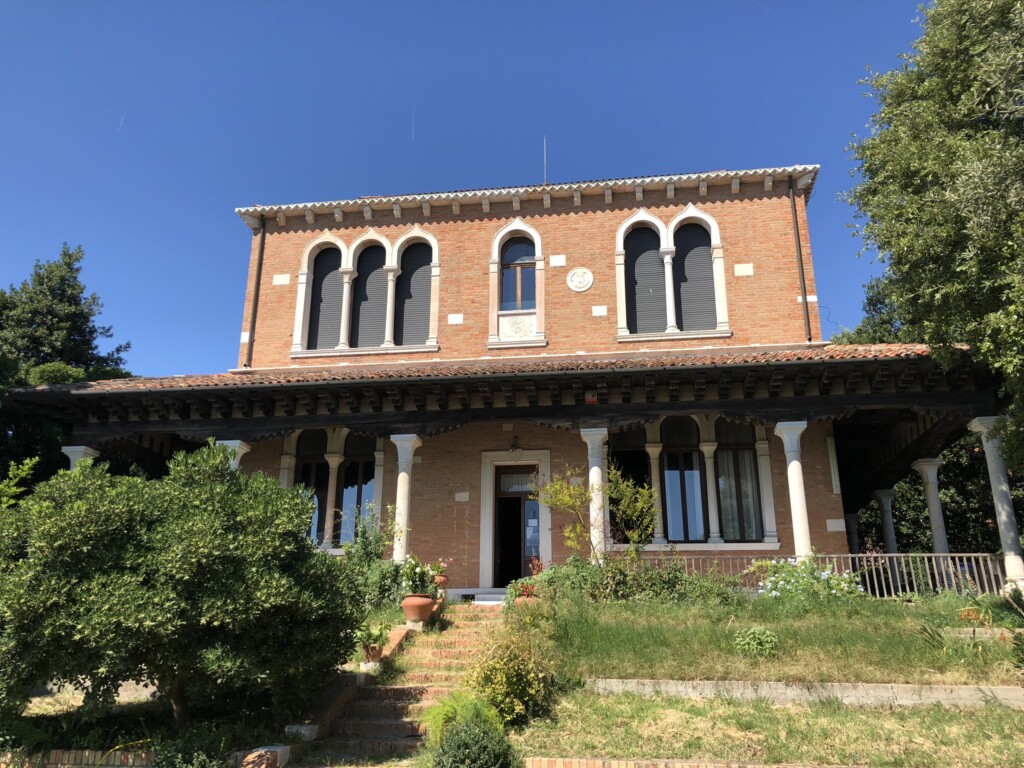
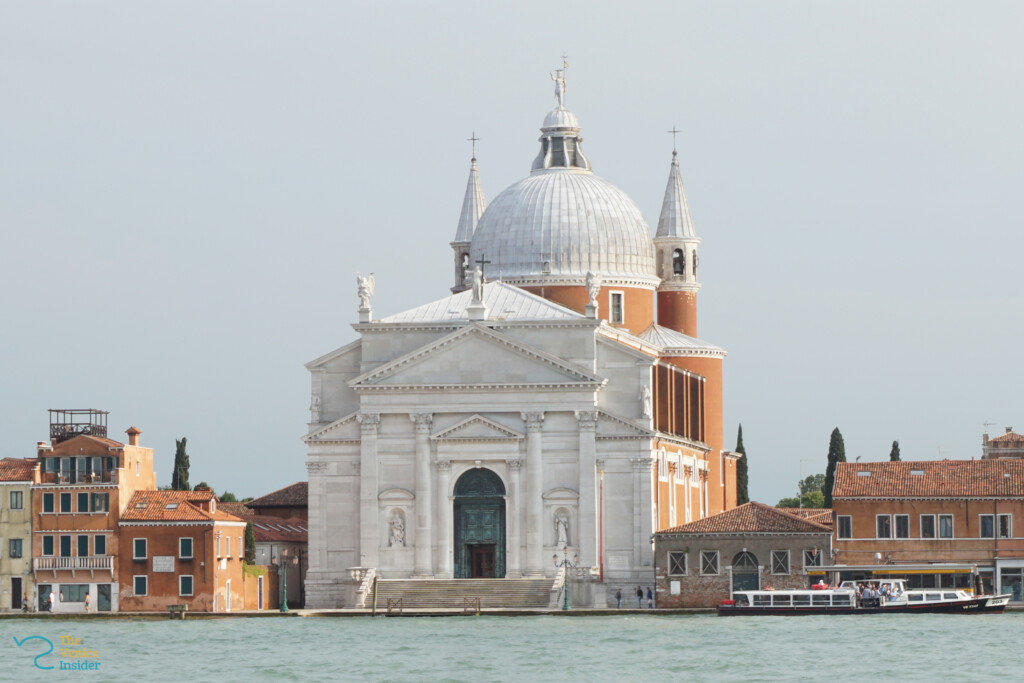
6. Junghans
(Campo Junghans)
Besides the typical Venetian architecture, you will notice quite a lot of contemporary apartments in Giudecca. The former industrial areas were transformed by modern architects in the 20th century. Some are very pretty, while others are in my opinion less beautiful. It’s certainly a totally different side of Venice. One example is the transformation of the abandoned area of the Junghans factory, which produced clocks and military fuses. In 1995, Cino Zucchi designed a urban plan with open spaces, small streets and gardens, in harmony with the surrounding canals and water. This new project combines semi-subsidised housing, university dormitories and private residences.
INSIDER TIP: On the Campo Junghans, have a drink on the large and quiet terraces before you continue your walk.
Other examples are the Sacca Fisola, which dates from the 1950s, the project of Gino Valle from the 1980s and the Campo di Marte of Álvaro Siza. This last project was completed at the occasion of the Architecture Biennale 2016.
7. Convento Santi Cosma e Damiano
(Calle Cosmo, Giudecca 620)
The Santi Cosma e Damiano monastery was founded in 1481 by Marina Celsi. She followed the rules of Benedictine monasticism and of clausura (strict encloisterment). It became one of the most prestigious female monasteries of the city, with several residents of the most influential patrician Venetian families, such as Contarini, Falier and Giustinian. Five years after the foundation, the convent housed 15 nuns. By 1508, this number had increased to 100. When it disbanded in 1805, there were however only 32 nuns left. The building was then transformed into a military hospital with barracks and later into a shelter for the homeless and poor. In 1903, the church was used as a knitwear plant, which completely destroyed the interior. After the factory closed down in 1982, the complex was bought by the city of Venice. It was restored in the 1990s into condominiums, workshops and performance spaces.
Around the cloister of the monastery, you will now find several workshops of the artisanal centre ‘Artisti Artigiani del Chiostro’. The local artisans create traditional Venetian products, such as masks or glass, but also paintings, cards or metal objects. You can walk around freely and buy something if you like.
8. Le Convertite
(Fondamenta delle Convertite)
The site of the current women’s prison dates from around 1545. The complex was originally an Augustinian convent for nuns and a hospice for reformed prostitutes and other sexually tainted women. Sadly enough, the institution soon became notorious, as its rector Fra Giovanni Pietro Leon used the 400 nuns as his personal harem. He was convicted and beheaded in Piazza San Marco. The building became a hospital in 1806 and a prison in 1857.
DID YOU KNOW? The convent was originally named ‘Santa Maria Maddalena’. It became known as Le Convertite to reflect its role in converting ‘fallen’ women.
You cannot visit the prison itself, but you can attend its weekly market on Thursday morning. Female prisoners sell the produce from their vegetable garden on the Fondamenta in front of the prison. This is one of the projects to help their integration in the community after they served their sentence. The social cooperative Rio Terà dei Pensieri also works with the prisoners to create artisanal goods, such as bags, which are sold at different shops in Venice and Italy as well as online.
In 2024, the prison hosts the Holy See pavilion of the Art Biennale 2024. Entitled ‘With My Own Eyes’, the pavilion is dedicated to the theme of human rights and people living on the margins of society, and seeks to draw the world’s attention to those people who are largely ignored while fostering a culture of encounter. This is a unique opportunity to visit the women’s prison. Pope Francis will visit the pavilion on April 28.
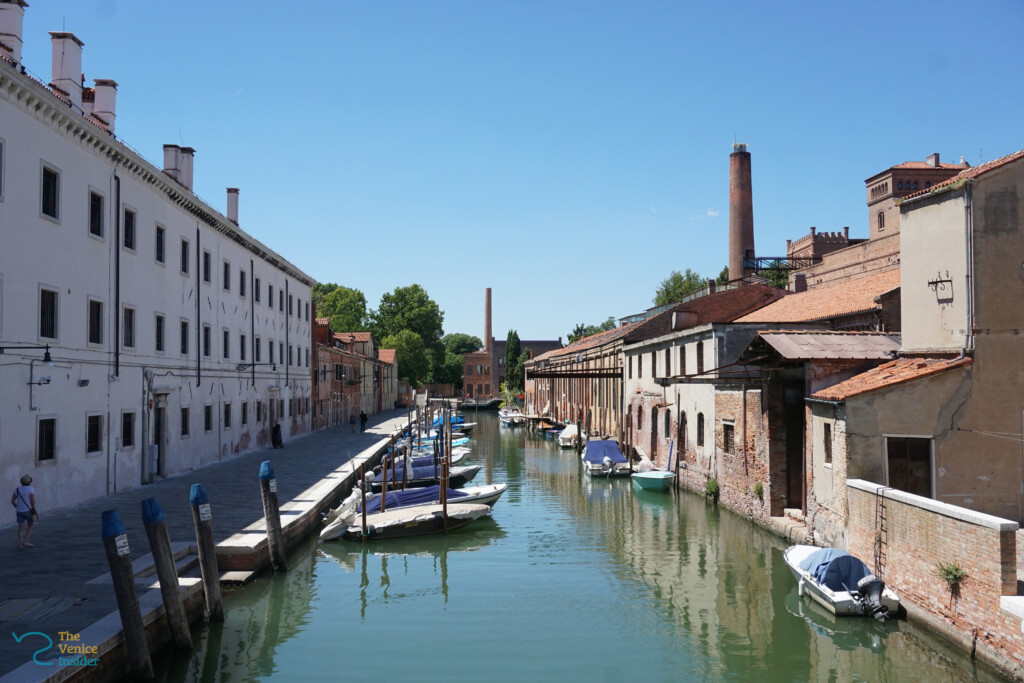
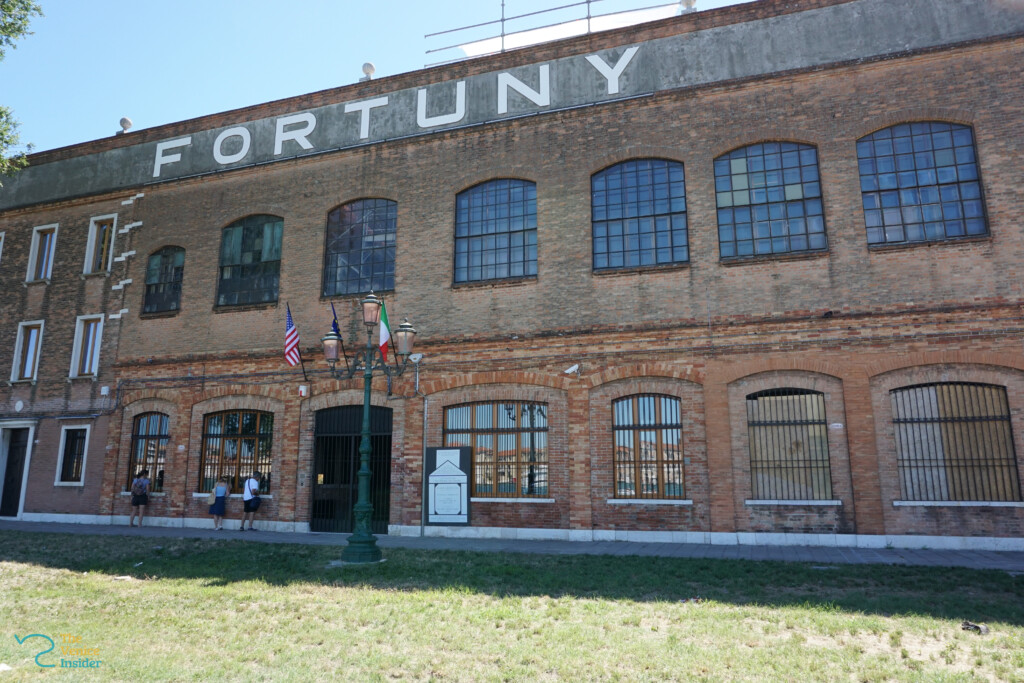
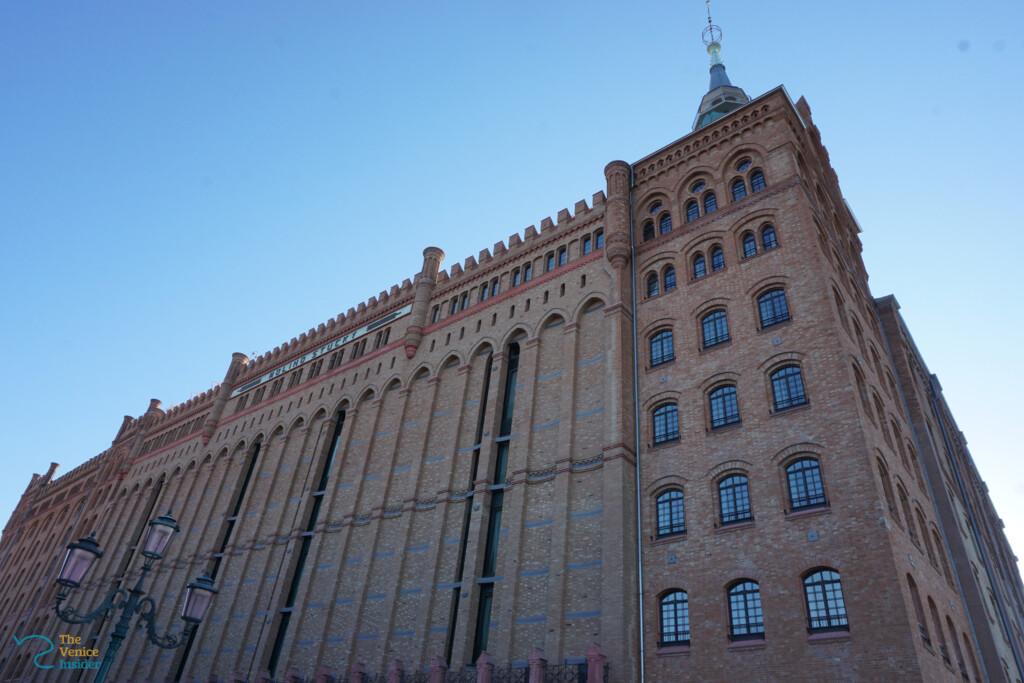
9. Fortuny
(Giudecca 805)
The Fortuny factory is located at the waterfront of the Giudecca Canal, next to the Hilton Molino Stucky. This former convent was bought in 1919 by the Spanish fashion designer and artist Mariano Fortuny, who had been living in Venice since the age of 18. He transformed it into a production area, moved his textile production from Palazzo Fortuny and opened its doors in 1921. Fortuny started here to experiment with cotton, a material which was more readily available and cheaper than silk. The famous Fortuny fabrics are still produced at this original factory, on the original machines, using the same secret processes to treat cotton as developed by Mariano Fortuny a century ago. The company is now run by the Riad family.
INSIDER TIP: Palazzo Fortuny is a museum which brings temporary exhibitions in the former home and workshop of Mariano Fortuny. At the moment, you can visit the exhibition ‘Selva’ of Eva Jospin, a French artist. To avoid confusion, this is not in the factory, but in the San Marco district.
To protect the trade secrets, the Fortuny factory is not open for visitors. You can however visit the showroom (on weekdays) and the adjacent gardens (by appointment).
10. Molino Stucky
(Giudecca 810)
At the west side of Giudecca, the high tower of the former Molino Stucky flour mill (or molino in Italian) marks (almost) the end of the island. It was designed by Ernst Wullekopf in 1898 in a neo-Gothic style. The brick façade hides a steel and reinforced concrete structure. It was built for Giovanni Stucky, son of a Swiss immigrant, who started a flourishing international trade of wheat, flour and pasta. He became one of the richest men in Venice before he was murdered in 1910 by a former worker. The factory was closed in 1955.
After years of decline, the 13 buildings of the mill have been redeveloped into a Hilton hotel, which opened in 2007.
INSIDER TIP: If you end your tour here, take the elevator to the top floor and enjoy a drink at the Skyline bar. You will have a beautiful view over Giudecca and Venice.
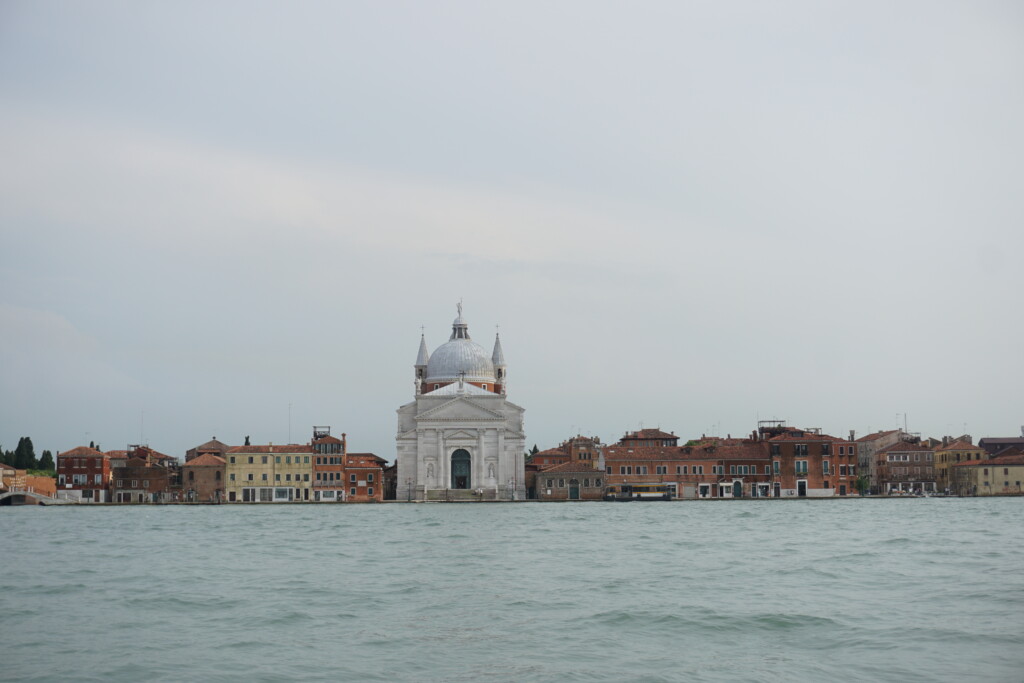
Enjoy your walk!
